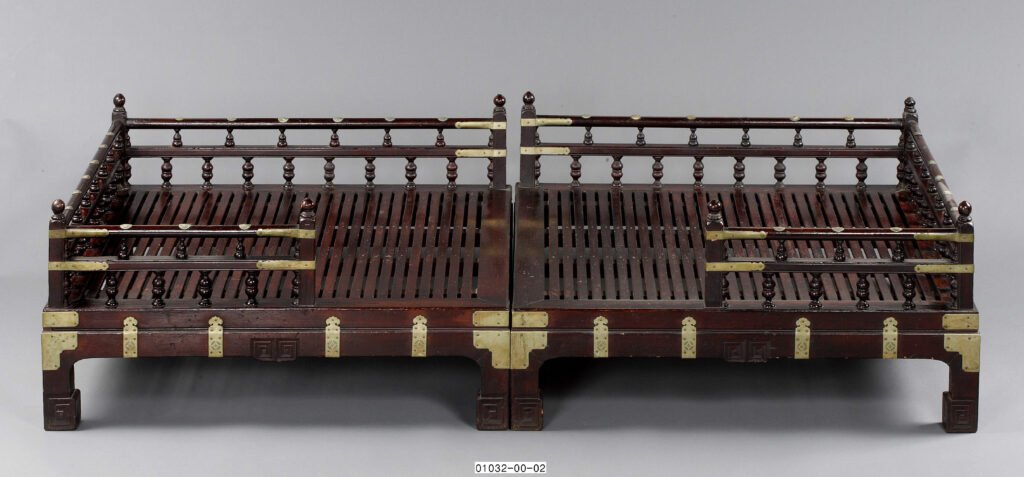Feature photo: Day bed. DATE1800s. zelkova frame, bamboo slats, brass fittings. HxWxD: 12 1/2 × 78 × 37 in. Collection: Weisman Art Museum, Minneapolis, USA
If we examine the Goguryeo tomb murals depicting daily life, we can see that the Goguryeo royal family and nobles lived a seated lifestyle. There are two theories about the main figure of An-ak Tomb No. 3, built in the mid-4th century. Some believe he was Dongsu, a Chinese exile, while others argue he was a Goguryeo king, such as King Micheon or King Gogukwon. A painting in the tomb depicts the main character sitting on a flat bed with a curtain. The Deokheung-ri tomb, built around 408, also shows the main character, Jin, sitting on a flat bed. In the Yaksu-ri tomb (early 5th century) and Ssangyeongchong (late 5th century), the main figures, a married couple, are depicted sitting side by side on a flat bed.
The low flat beds seen in the Goguryeo tomb murals are referred to as “pagodas.” A pagoda that can seat one person is called a “doktap” (獨榻), while one that can seat two people together is called a “haptap” (合榻). It is believed that the pagoda, a piece of sitting furniture from the Han Dynasty of China, was introduced to Goguryeo, which had a different lifestyle. The pagodas in the murals of the Deokheung-ri tomb and the Ssangyeongchong tomb are square, have four legs, and the underside of the seat is decorated with flame patterns or sawtooth protrusions. Judging by the fact that all of them, including those in the Yaksu-ri tomb, are depicted in black, it is clear that they were made of wood and painted.
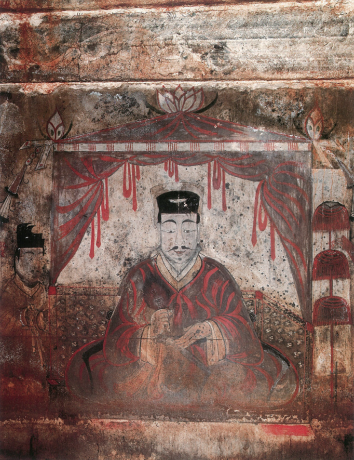
West wall of the west side room The deceased master is depicted frontally on the wooden bed with curtains, and his attendants are seated on his either side. He is wearing a Baekna (white silk) crown with a black inner headdress and holds a zhuwei fan in his right hand. This scene generally follows the rule of early figure paintings that represent the important figures larger than his attendants.
During the Joseon dynasty, the day bed, often referred to as a “pyung sang” (평상), is a multipurpose wooden platform used for sitting, lounging, or sleeping. The platform was divided into two or three sections to make it easy to stack or move. The pyung sang has been used for centuries, particularly in rural Korea, where it was a common piece of furniture for farmers and villagers. It originated as a simple, practical solution to Korea’s hot summers, offering an elevated surface for cooling and resting. In winter, although less common, they could be moved indoors near a heated floor (ondol) for comfort. Traditionally, the pyung sang was not just a piece of furniture but also a communal space where families gathered to socialize, eat, or relax. It was often placed outdoors under a tree or near a house, symbolizing hospitality and community spirit.
Traditionally made of durable woods like pine or paulownia, chosen for their availability and suitability to Korea’s climate. The wood was often untreated, allowing it to age naturally and develop a patina over time.
Its structure comprises a rectangular wooden platform, elevated on sturdy legs. The design is simple, emphasizing functionality and ease of construction. Slats or open spaces in the platform allow air circulation, keeping the surface cool. Some pyung sangs include carvings or decorative elements, although they are generally minimalistic to maintain their practical purpose. Occasionally, mats or cushions are added for comfort. Sizes vary depending on usage, with larger versions designed for multiple people.
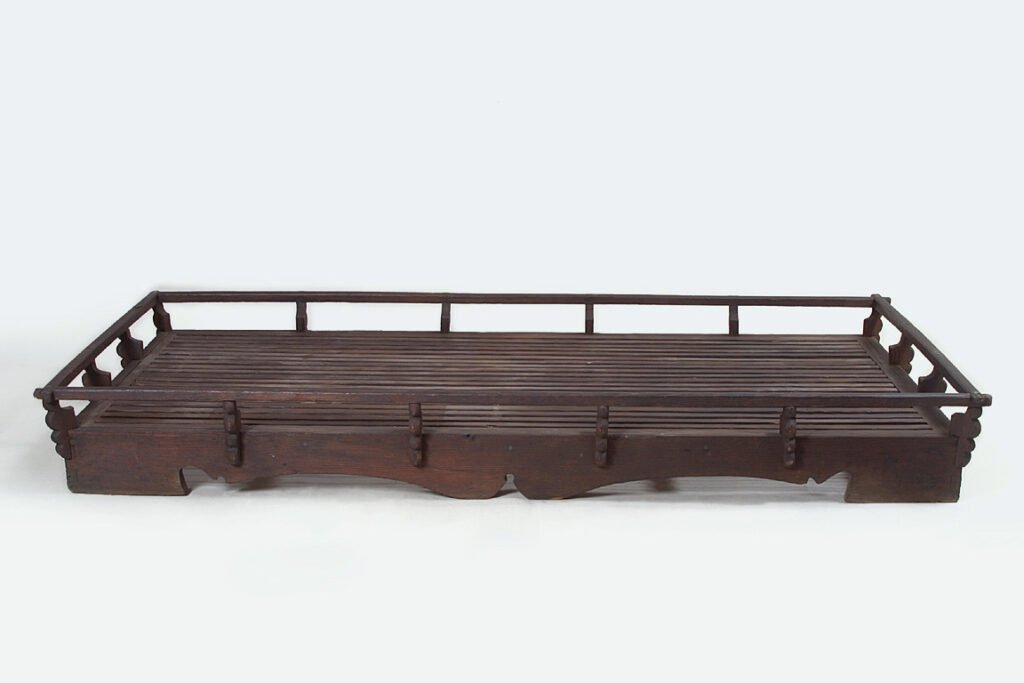
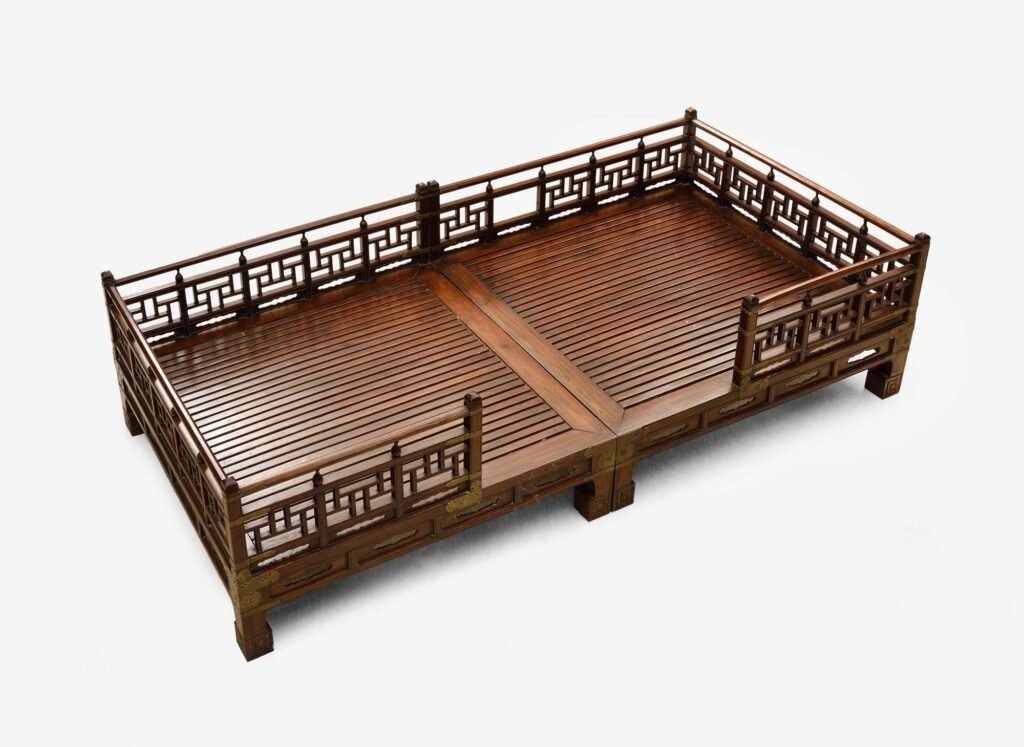
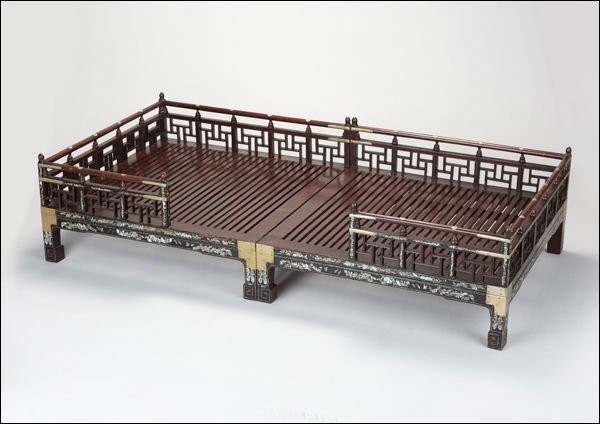
H. 47cm, W. 98,5. D. 98,5cm / sections. Collection: National Folk Museum of Korea.
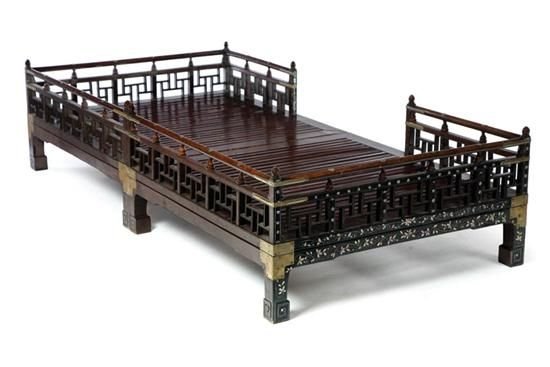
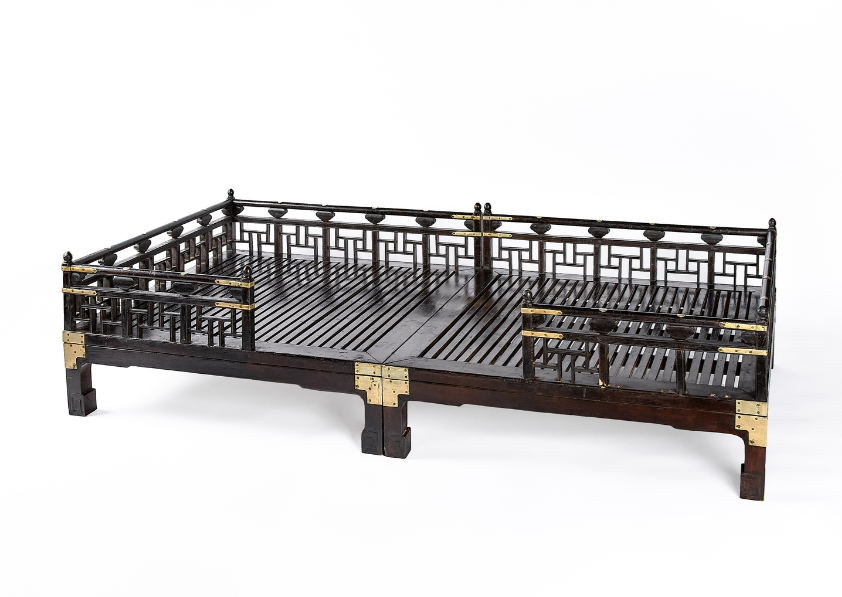
Among the Aristocrats, the bed was placed on the path passing through the official residence, and officials used it for resting. The day bed, which had railings on three sides, was covered with silk and had a large mat. It was used only during ceremonies related to the king and high-ranking officials or when entertaining Chinese envoys. This is how the day bed (臥榻), or flat tables, are described in the ‘Seonhwabongsa Goryeodogyeong (宣和奉使高麗圖經),’ written by Seo Geung (徐兢), an official of the Song Dynasty who came as an envoy to Goryeo in the first year of King Injong’s reign (仁宗). The flat bed was used for reading books, playing baduk. It was placed in the main hall or on the veranda. The long, square pieces of wood were spaced at regular intervals to ensure good ventilation, making it ideal for summer. The flat beds typically came in pairs.



Gyeonggi Do province.
H. 23cm, L. 180cm, D. 77cm. Collection: Weisman Art Museum, Minneapolis, USA.

Collection: National Folk Museum of Korea.
